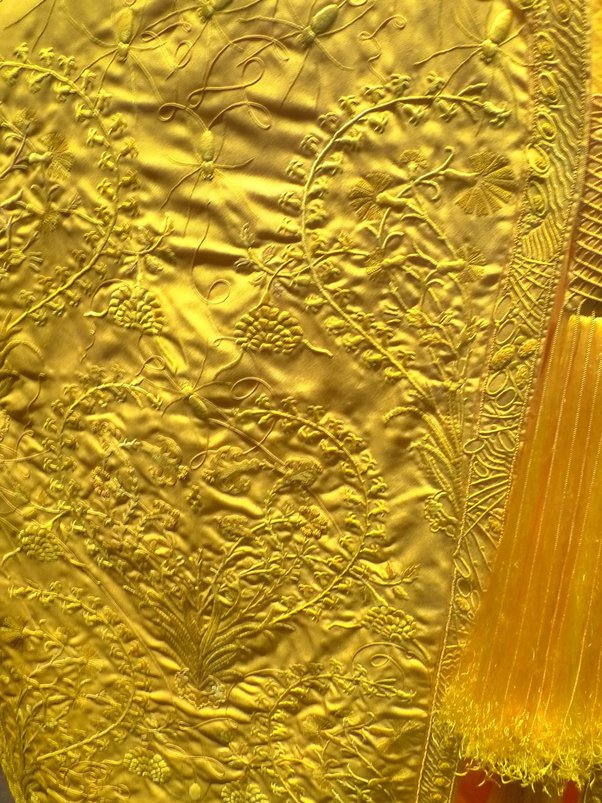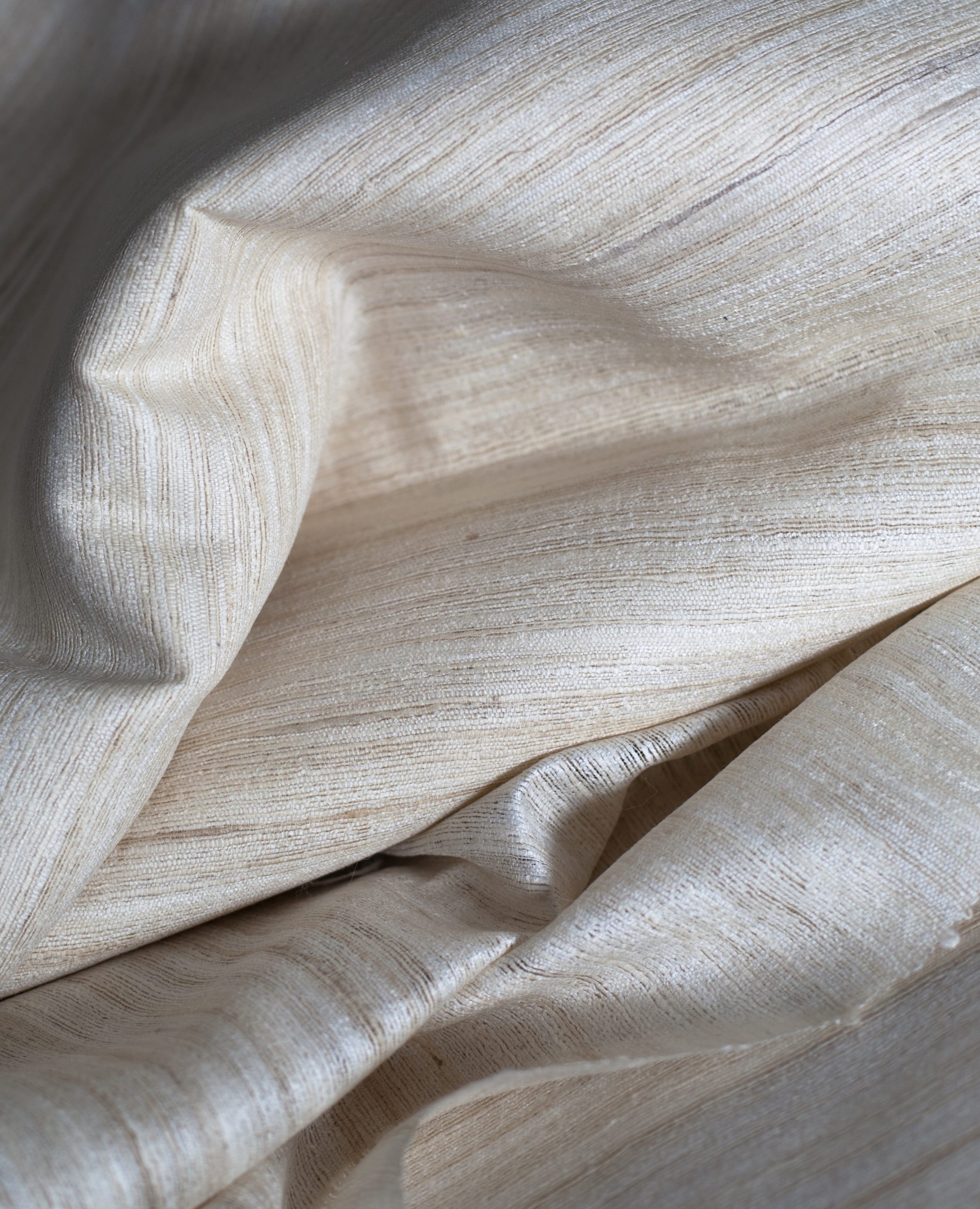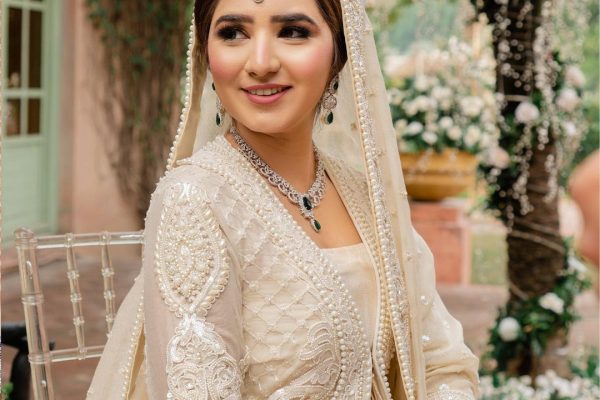The origin of silk saree
The origin of silk sarees is intertwined with the ancient history, rich cultures, and exquisite craftsmanship of the regions they hail from. These elegant garments hold a significant place in the hearts of people across South Asia, serving as symbols of tradition, artistry, and celebration. The story of silk sarees is a journey through time, tracing back to the beginnings of silk production and weaving techniques in ancient civilizations.
Silk, a luxurious and coveted fabric, has been cherished for its softness, sheen, and intricate texture since time immemorial. The journey of silk sarees begins with the sericulture practices that originated in China around 2700 BCE. According to Chinese mythology, Empress Leizu discovered the secret of silk production when a silkworm cocoon fell into her tea, unraveling a delicate thread of extraordinary beauty. This marked the dawn of sericulture, as the knowledge of raising silkworms and weaving silk threads spread gradually along the fabled Silk Route.
The art of sericulture, initially a well-guarded secret in China, ventured beyond its borders through trade routes connecting East and West. The intricate web of exchange facilitated not only the flow of goods but also the sharing of cultural ideas, artistic techniques, and textiles. Silk, as a commodity of immense value, played a pivotal role in connecting diverse civilizations across Asia and beyond.
As the Silk Route expanded its networks, silk production techniques reached the Indian subcontinent, setting the stage for the creation of silk sarees. The melding of indigenous weaving traditions with the expertise of silk cultivation resulted in the emergence of exquisite textile artistry. Each region added its unique touch to the process, leading to the creation of distinct styles of silk sarees.
Types Of Silk and Their Characteristics:
Silk, a natural fiber derived from the cocoons of silkworms, comes in various types, each with its unique characteristics, texture, and sheen. These different types of silk are used to create a diverse range of textiles, including the exquisite sarees that are treasured across cultures. Here is an overview of some prominent types of silk and their distinct attributes:
1. Mulberry Silk:
- Origin: Mainly produced from the Bombyx mori silkworms.
- Characteristics: Known for its fine texture, smoothness, and natural sheen. It has excellent dye absorption, resulting in vibrant colors.
2. Tussar Silk (Also known as “Wild Silk”):
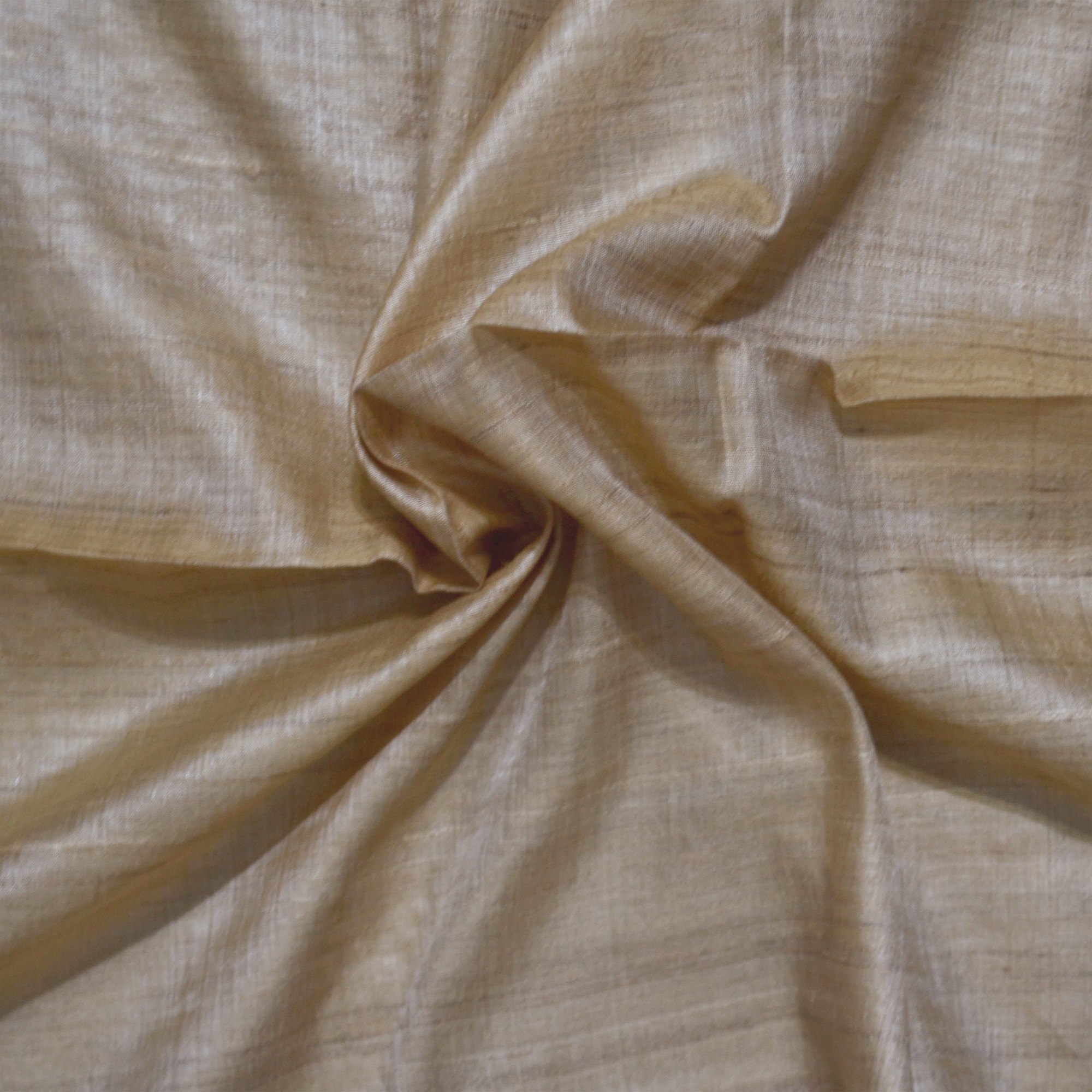
- Origin: Produced by various species of wild silkworms.
Characteristics: Has a coarser texture compared to mulberry silk, with a slightly irregular weave. Tussar silk often features a natural golden hue.
3. Eri Silk (Also known as “Peace Silk”):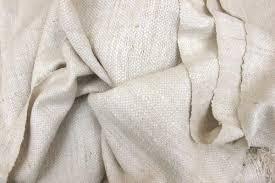
- Origin: Produced by the Philosamia ricini silkworm.
- Characteristics: Eri silk has a distinctive texture, is lightweight, and has a wool-like feel. It’s considered more eco-friendly as silkworms are not harmed during cocoon harvesting.
4. Muga Silk: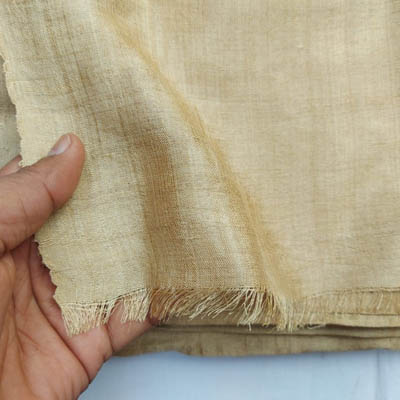
- Origin: Exclusive to Assam, India, produced by Antheraea assamensis silkworms.
- Characteristics: Renowned for its natural golden color, Muga silk has a glossy sheen and a robust texture.
5. Kosa Silk: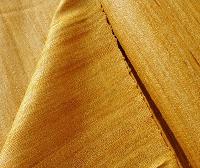
- Origin: Indigenous to Chhattisgarh, India, produced by Antheraea mylitta silkworms.
- Characteristics: Kosa silk has a coarse texture with a natural shine. Its unique golden hue adds to its appeal.
6. Banana Silk:
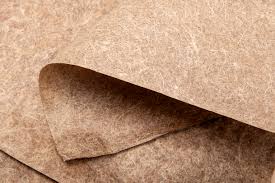
- Origin: Produced from the fibers of banana plants.
- Characteristics: Banana silk has a slightly slubby texture and a matte finish. It’s often used for eco-friendly textiles.
7. Spider Silk (Produced in limited quantities):
- Origin: Derived from the silk of spiders.
- Characteristics: Extremely strong and lightweight, spider silk is rare and not commonly used due to the challenges of harvesting.
8. Ahimsa Silk (Non-Violent Silk):
- Origin: Also known as “Peace Silk,” it’s produced by allowing silkworms to complete their life cycle before harvesting.
- Characteristics: Ahimsa silk maintains the qualities of mulberry silk while aligning with ethical practices.
9. Schappe Silk:
- Origin: Made from the waste silk fibers left after combing and carding.
- Characteristics: Schappe silk has a lustrous appearance and is often blended with other fibers.
10. Muga Eri Silk (Blend of Muga and Eri silks):
- Origin: A combination of Muga and Eri silks.
- Characteristics: This blend combines the sheen of Muga with the comfort of Eri silk, creating a unique textile.
15 Glorious Indian Wedding Sarees With All Information
These various types of silk provide an array of textures, colors, and qualities that contribute to the diversity of silk sarees. The choice of silk type plays a crucial role in determining the look, feel, and overall aesthetic of the finished saree. From the fine smoothness of mulberry silk to the rustic charm of Tussar and Eri silks, each type offers a distinct experience for both the wearer and the admirer.
- Silk Sarees from Various Regions
- Silk sarees from various regions exhibit a captivating diversity, reflecting the cultural nuances and weaving traditions of their respective areas. Each saree tells a unique story through its choice of silk, weaving techniques, motifs, and colors. Here is a breakdown of some prominent silk sarees from different regions, showcasing their distinctive features:
Kanchipuram Silk Saree (Tamil Nadu):
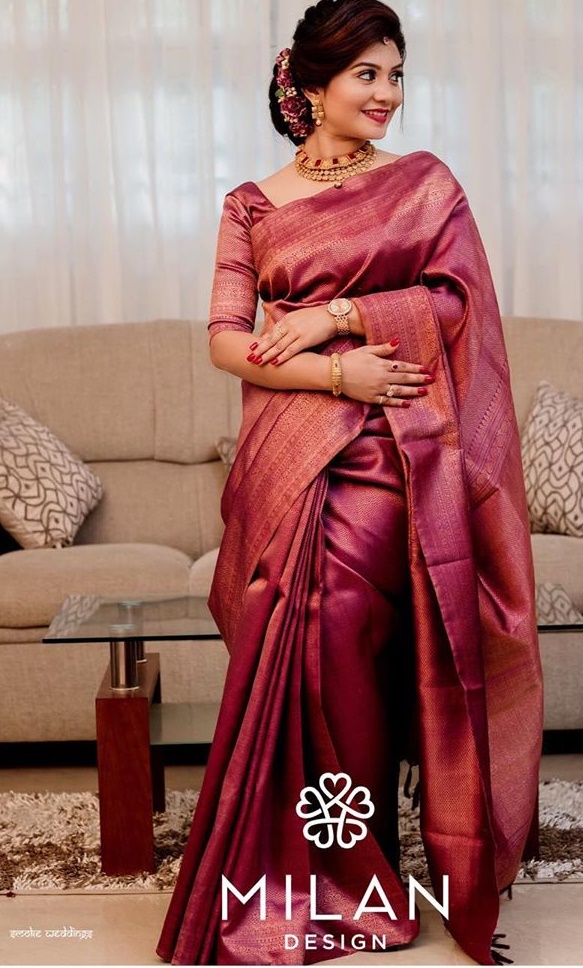
- Type of Silk: Primarily made from mulberry silk.
- Distinctive Features: Known for their rich and heavy zari work, Kanchipuram sarees are characterized by bold, vibrant colors, wide borders, and intricate designs inspired by temple architecture and nature.
Banarasi Silk Saree (Uttar Pradesh):
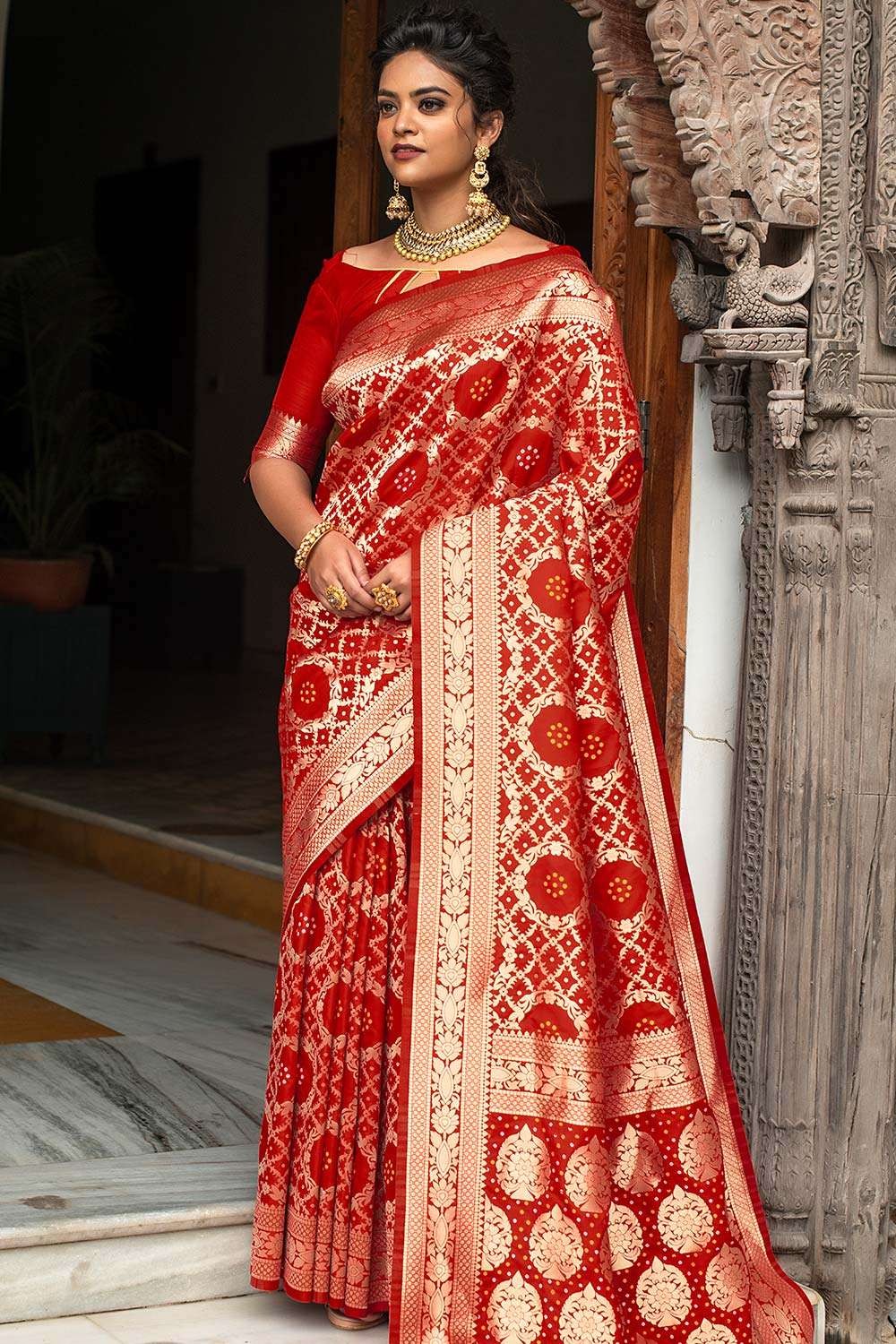
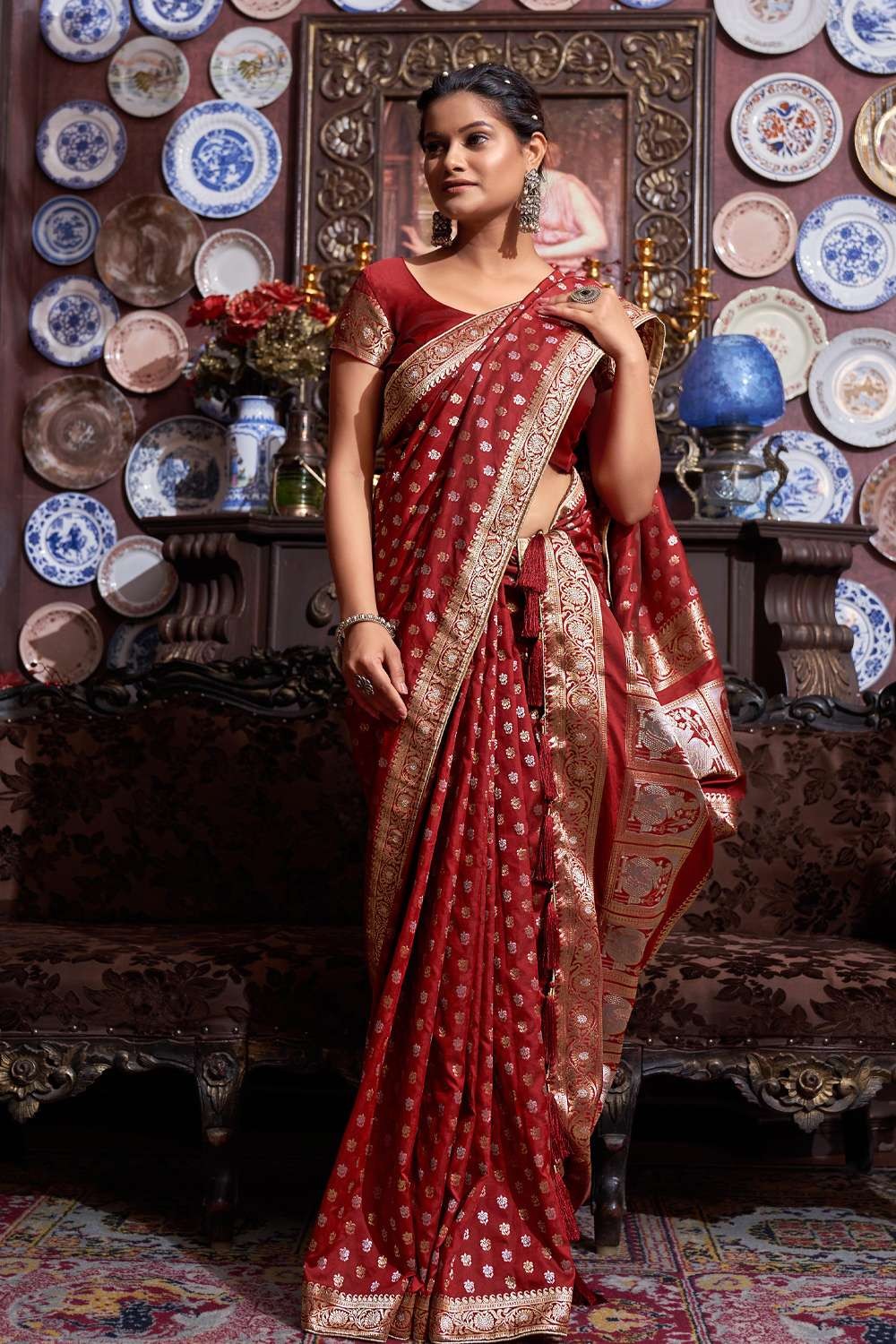
- Type of Silk: Typically crafted from fine mulberry silk.
- Distinctive Features: Banarasi sarees are renowned for their opulent zari work, intricate brocade patterns, and Mughal-inspired motifs. They often feature intricate designs of flowers, leaves, and geometric shapes.
Patola Silk Saree (Gujarat):
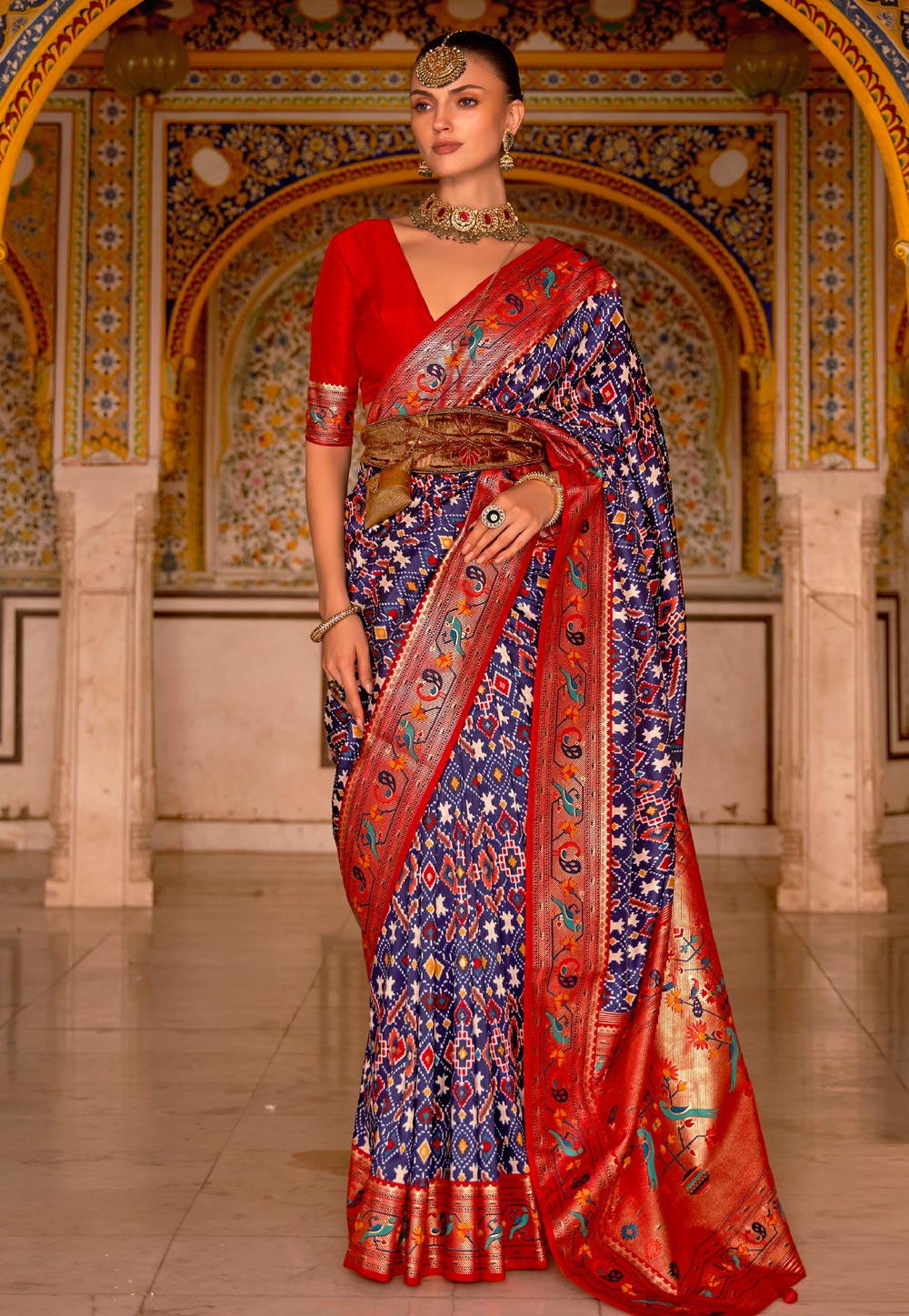
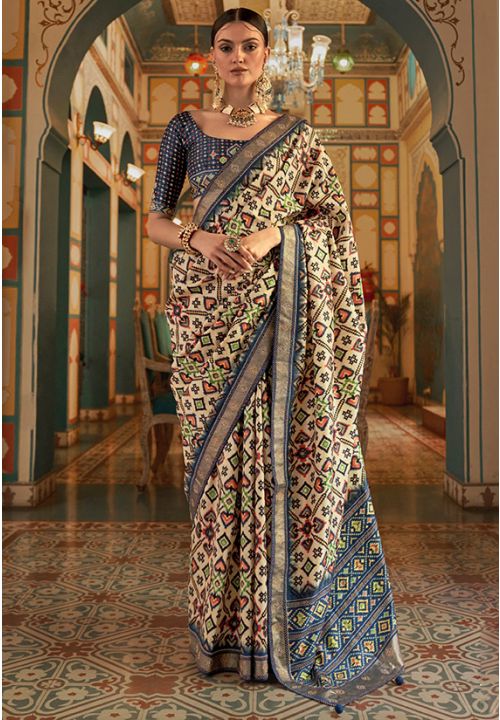
- Type of Silk: Patola sarees are made using the double ikat technique on silk threads.
- Distinctive Features: Patola sarees are famous for their geometric and symmetrical designs. Each Patola saree is a masterpiece, taking months to create due to the intricacy of the dyeing and weaving process.
Baluchari Silk Saree (West Bengal):
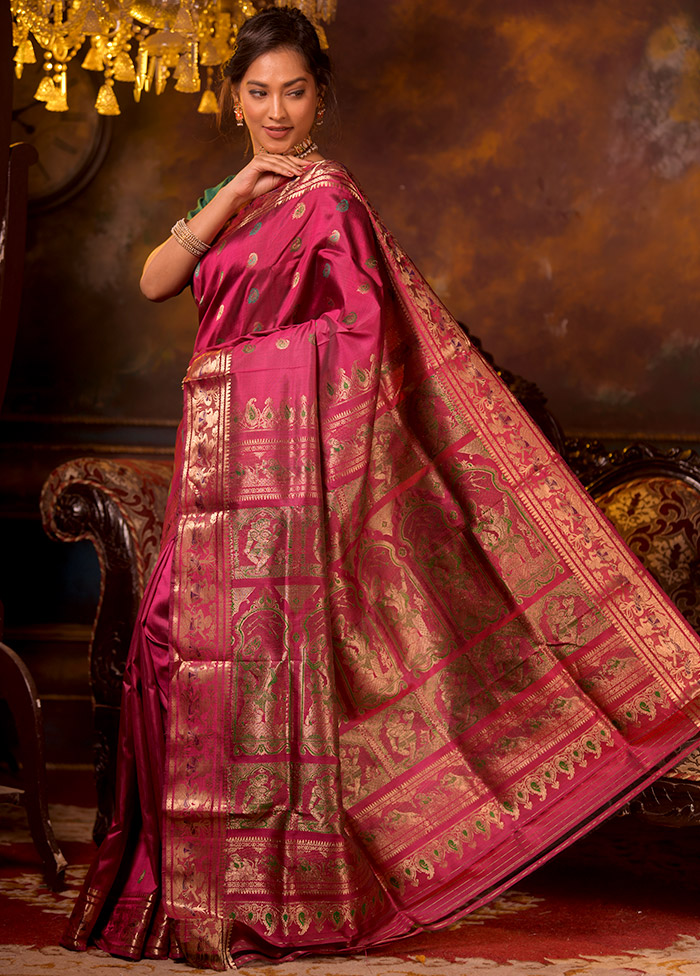

- Type of Silk: Baluchari sarees are woven using silk threads.
- Distinctive Features: Baluchari sarees are known for their intricate woven patterns depicting mythological scenes and stories. The pallu often features elaborate narratives that showcase the weaving artisans’ storytelling skills.
Pochampally Ikat Silk Saree (Telangana):
- Type of Silk: Pochampally sarees are made using silk threads with the ikat dyeing technique.
- Distinctive Features: Pochampally sarees are known for their vibrant colors and bold geometric patterns achieved through the ikat process. They have a contemporary and lively appeal.
Mysore Silk Saree (Karnataka):
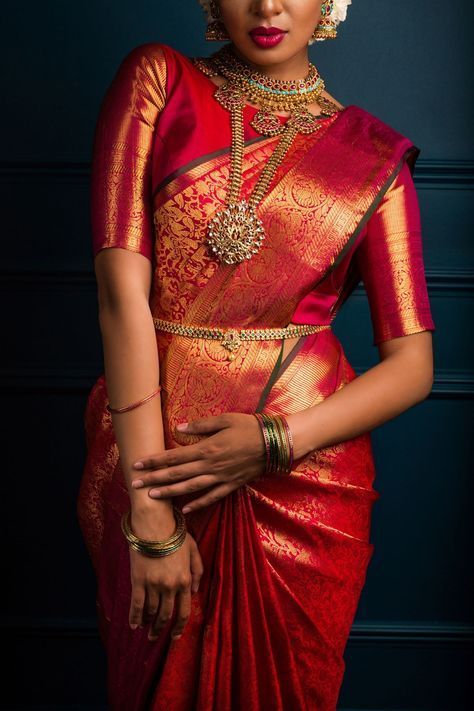
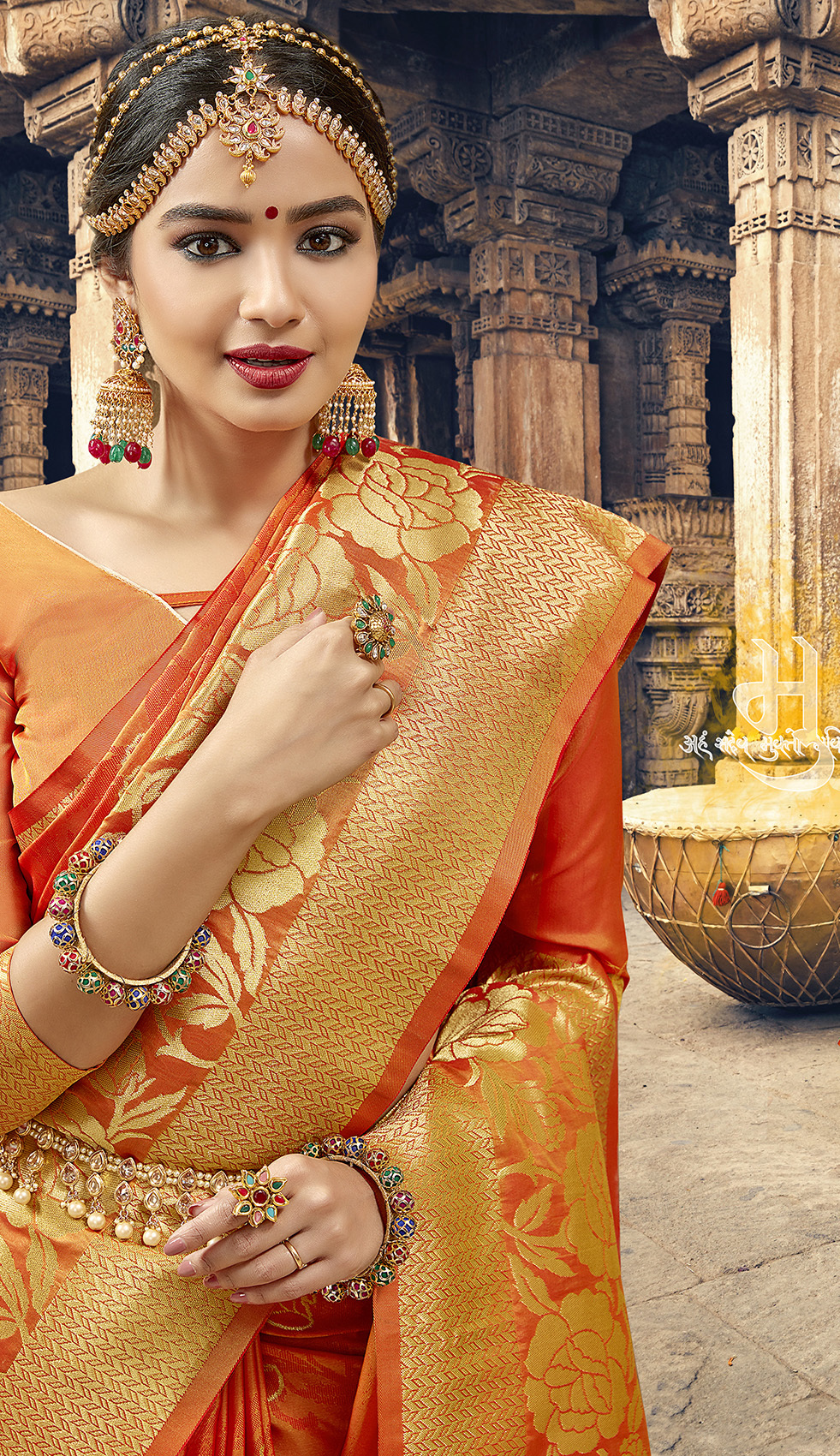
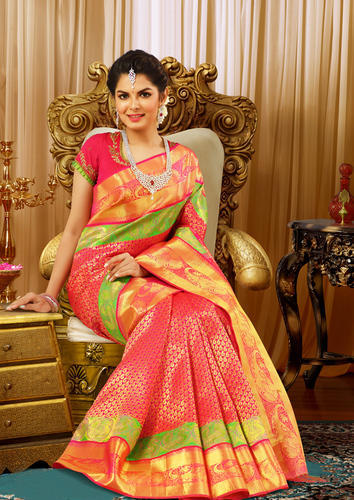
- Type of Silk: Mysore silk sarees are woven using high-quality mulberry silk.
- Distinctive Features: Mysore silk sarees are characterized by their understated elegance, often featuring minimalistic zari work. They are known for their soft texture and rich colors.
Chanderi Silk Saree (Madhya Pradesh):
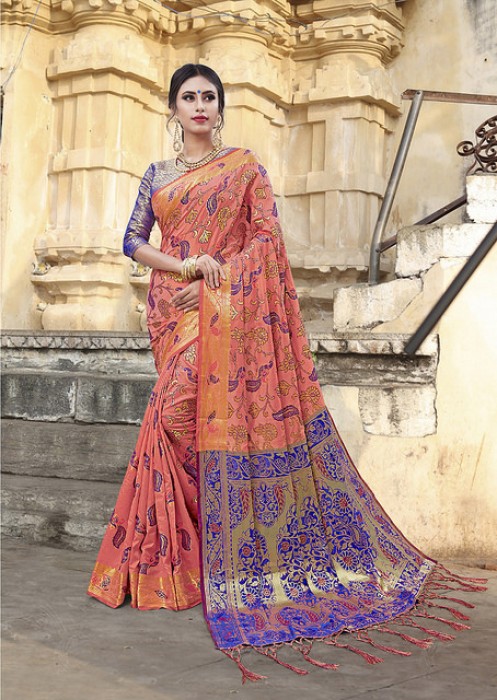
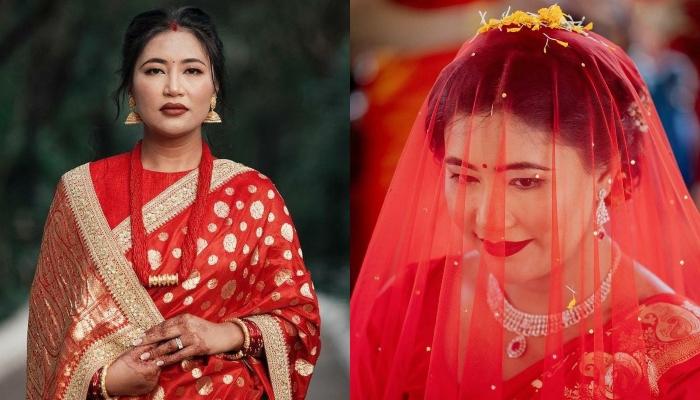
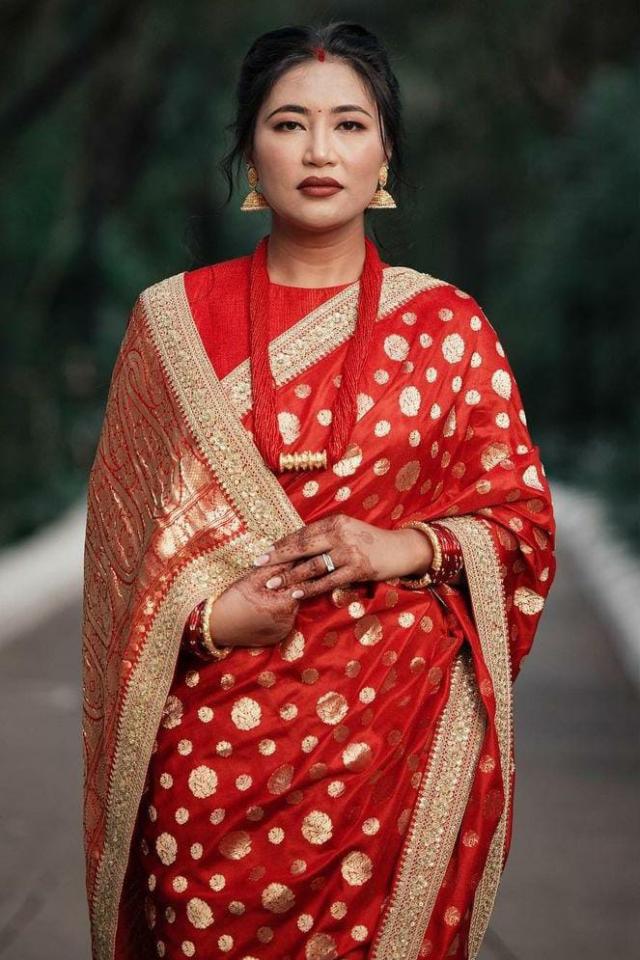
- Type of Silk: Chanderi sarees are woven using a mix of silk and cotton or silk and zari.
- Distinctive Features: Chanderi sarees are celebrated for their lightweight texture, sheer appearance, and delicate zari work. They often have pastel shades and intricate designs.
Jamdani Silk Saree (West Bengal):
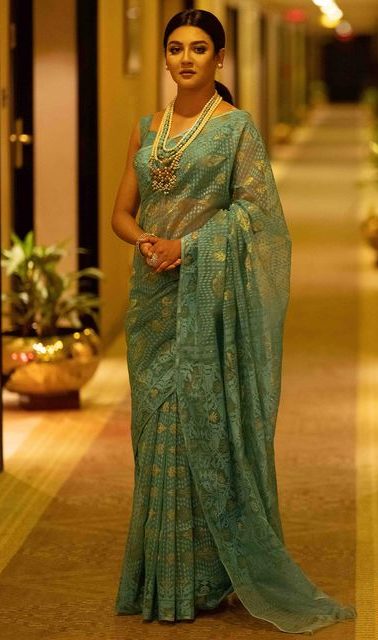
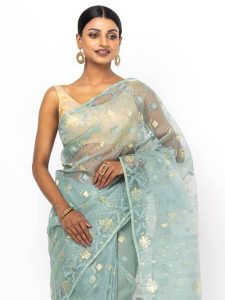
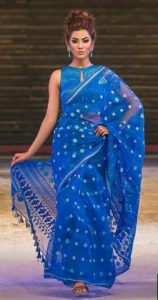
- Type of Silk: Jamdani sarees are woven using a combination of cotton and silk threads.
- Distinctive Features: Jamdani sarees are famous for their intricate patterns, achieved by adding extra weft threads during weaving. They feature delicate motifs, including flowers, birds, and geometric shapes.
Jamdani Saree: Origin, Making Process, features, and Pricing
9. Assam Silk Sarees (Muga, Eri, Pat, and Tussar) (Assam):
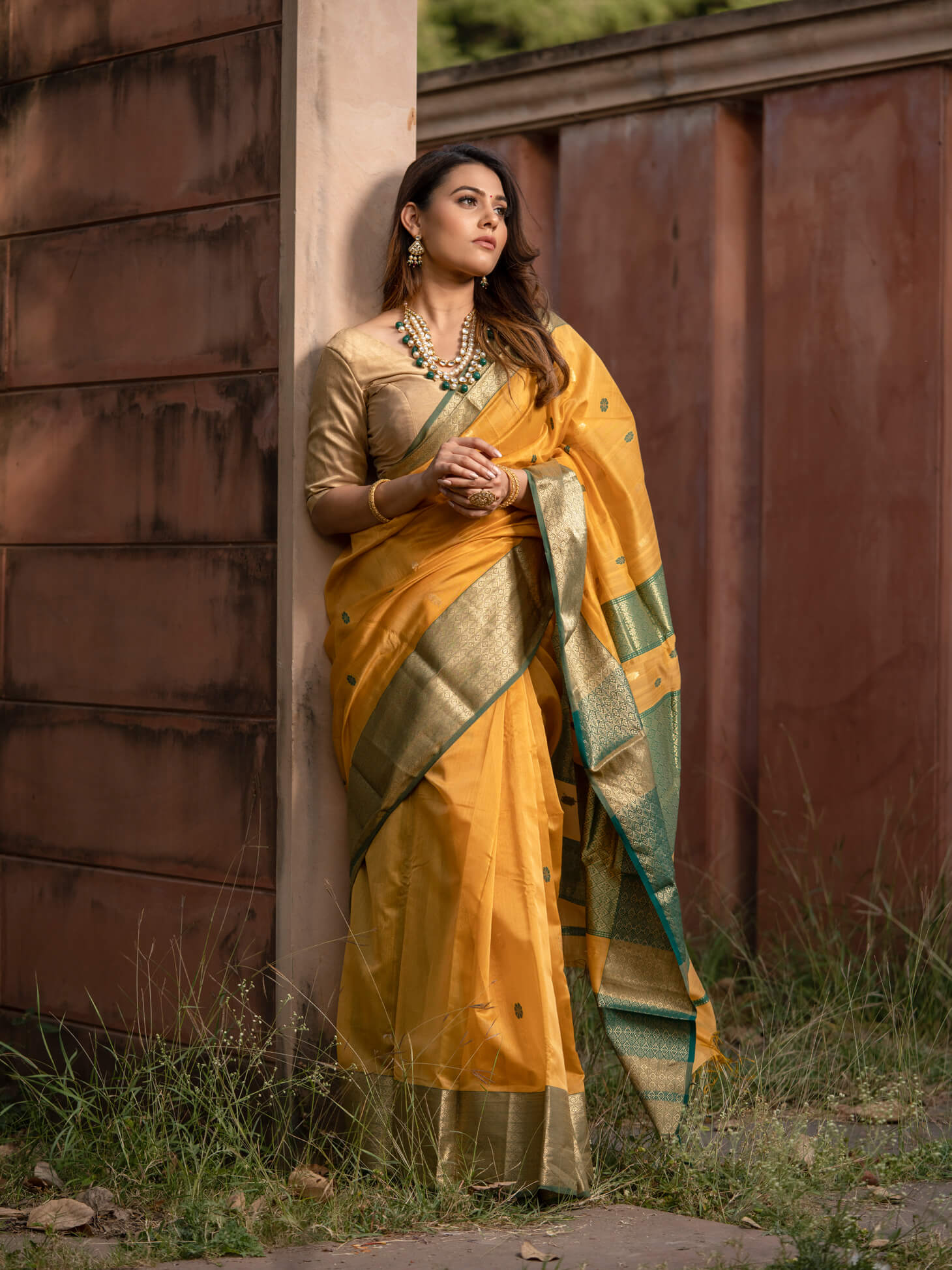
- Types of Silk: Assam offers a variety of silks, including Muga, Eri, Pat, and Tussar.
- Distinctive Features: Each type of Assam silk has its unique characteristics. Muga silk sarees have a natural golden sheen, while Eri silk sarees are known for their comfort and warmth. Pat silk sarees have intricate patterns, and Tussar silk sarees showcase a raw and rustic texture.
10. Maheshwari Silk Saree (Madhya Pradesh):
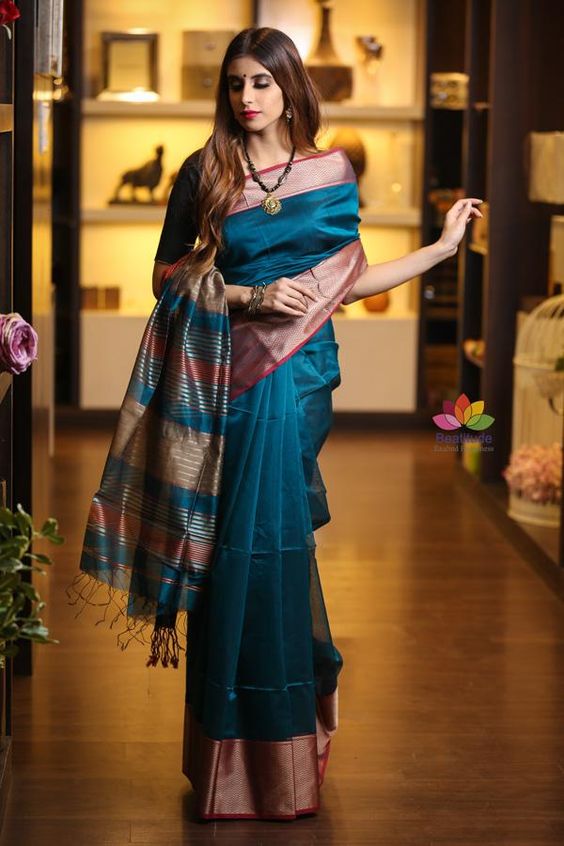
- Type of Silk: Maheshwari sarees are woven using a combination of silk and cotton threads.
- Distinctive Features: Maheshwari sarees are characterized by their unique checked patterns and elegant zari borders. They are known for their lightweight and breezy feel.
These silk sarees from various regions celebrate the distinct artistic sensibilities, weaving techniques, and cultural heritage of their respective areas. The intricate craftsmanship and unique motifs embedded in each saree make them not just garments but living expressions of tradition and creativity.
Designs, Patterns, and Motifs
Designs, patterns, and motifs are the heart and soul of silk sarees, as they convey cultural symbolism, artistic expression, and the craftsmanship of skilled weavers. From traditional to contemporary, each design choice carries a distinct narrative and significance. Here’s an exploration of designs, patterns, and motifs found in various silk sarees and their cultural importance:Traditional Designs and Motifs:
-
Peacock Motif
- The peacock symbolizes grace, beauty, and immortality in Indian culture.
- Peacock motifs are often seen in Kanjeevaram and Banarasi sarees, representing cultural richness and elegance.
- Mango Motif
- The mango is considered a symbol of fertility and abundance.
- Mango motifs are prevalent in various silk sarees, signifying prosperity and growth.
- Lotus Motif
- The lotus represents purity, enlightenment, and spirituality.
- Lotus motifs are common in sarees, especially during religious and auspicious occasions.
- Elephant Motif
- Elephants symbolize strength, royalty, and good luck.
- Elephant motifs are often featured in sarees worn by brides as a representation of marital blessings.
- Floral Patterns
- Flowers symbolize beauty, purity, and new beginnings.
- Various floral patterns are woven into silk sarees, reflecting the vibrant flora of different regions.
- Buttas or Bootis
- Small motifs, resembling fruits, leaves, or flowers, scattered across the saree.
- Common in many silk sarees, they add a touch of elegance and continuity.
- Temple and Architecture Motifs
- Often found in Kanjeevaram and Baluchari sarees, these motifs depict intricate temple architecture.
- They pay homage to spirituality, culture, and historical significance.
- Jamdani Patterns
- Jamdani sarees feature intricate patterns inspired by nature, animals, and birds.
- These patterns tell stories of life and connect the wearer to nature.
- Ganga-Jamuna Border
- A blend of different colors in the border, symbolizing the confluence of the Ganges and Yamuna rivers.
- Often seen in sarees like Banarasi, it represents unity and harmony.
Contemporary Innovations:
- Abstract and Geometric Patterns
- Modern silk sarees experiment with abstract designs and geometric shapes.
- These patterns cater to contemporary tastes while retaining the elegance of silk.
- Fusion of Traditional and Modern Elements
- Designers blend traditional motifs with modern color palettes and patterns.
- This fusion caters to the evolving preferences of the younger generation.
- Intricate Borders
- Silk sarees often feature intricate and wide borders that frame the entire garment.
- These borders can showcase a variety of patterns and textures, adding uniqueness to the saree.
- Minimalist Designs
- Contemporary silk sarees may feature minimalist patterns with subtle elegance.
- This style appeals to those who appreciate simplicity and sophistication.

